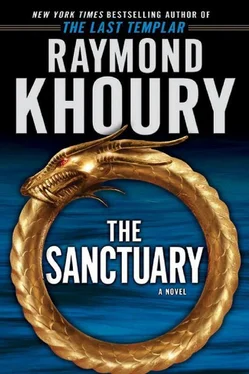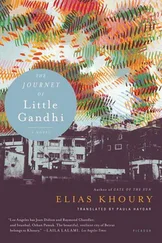“You mean, with wear and tear.” Kirkwood grinned.
“Yeah, well, life’s about wear and tear, isn’t it?” Mia shrugged. “I’m not about to move to some stress-free monastery in Tibet and spend my days humming show tunes and meditating in order to gain a couple of decades.”
“After Beirut — might be a tad boring,” he joked.
“Actually, on second thought — I’d happily take boring right now.”
Kirkwood nodded empathetically, then his expression went serious. “All I’m saying is, it’s possible. We just don’t know how yet. Cancer is believed to be curable, right? We’re working on it. We might not find that cure for another hundred years, but the odds are, one day, we will. It’s part of our MO. Not so long ago, infections ranging from simple viruses to flu pandemics were the main causes of death. The plague was considered a curse from God. We learned different. Now we’ve tamed those illnesses, we live long enough to experience heart disease and cancer. A hundred years ago, they were thought to be incurable, unlike infections. They were believed to come from within us. We now know that’s not the case. And once they’re tamed, who knows what the effects will be for the rest of the body.”
Mia studied him curiously. “You seem to know a hell of a lot about this.”
Kirkwood smiled. “I kind of have a vested interest.”
She looked at him, unsure of how to take that.
He paused, as if encouraging her moment of uncertainty, before adding, “We all do, don’t we? I don’t think anyone wants to die any sooner than they have to.”
“So you’re really into this? Do you also starve yourself and pop a couple of hundred pills a day?”
Many leading biogerontologists followed a regular exercise regime — the single universally accepted way to a healthier and longer life. They also self-medicated themselves with vitamins and antioxidants and were careful with what they ate. The latter was occasionally and unwisely taken to extremes, as severe calorie restriction was known to extend life — in animals, not in humans — although most would agree it had serious shortcomings in the quality-versus-quantity department.
“I look after myself, sure,” he conceded. “What about you?”
She held up her glass sarcastically. “That, and bullets — kind of not ideal if you’re hoping to break that hundred-year barrier,” she scoffed. She put her glass down and scanned the man’s face. There was something unsaid in his expression, a guardedness that she couldn’t really penetrate. “Seriously, though,” she insisted. “You’re more keyed into this than someone who’s just looking after himself.”
“We’ve got this small division in the UN — the World Health Organization?” Kirkwood ribbed her. “I’ve sat on some committees. We have a whole range of initiatives dealing with aging, but it’s mostly to do with improving the lives of the old. But we also host debates and prepare some in-depth studies, which I take the time to read — having a vested interest and all.” He looked at her intently. “You know all about the advances in molecular biology that are taking place. Science and technology are experiencing exponential growth. This accelerating growth rate has the potential to shrink distant projections to a tangible near future. What we think might take hundreds of years to achieve could only take a few decades. Replacement organs could be grown from stem cells; stem cells themselves could be injected into the body to repair it. The possibilities are endless. And I’m not even talking about distant dreams like artificial intelligence and nanotechnology. I’m talking about what we know is doable. And if our bodies are fixable, if the cellular wear and tear can be stopped or repaired once, there’s no reason why the process can’t be repeated. It would be like having your car serviced every ten thousand miles. It could just make us live much longer, or, if you push that notion to its logical conclusion, we could even be — in fact, it seems to me that a lot of scientists now seem convinced that we are — on the threshold of achieving medical immortality. And if that’s what this hakeem is after…it would explain a hell of a lot, wouldn’t it?”
Mia’s face pinched together as she considered the possibility. “You really think some primitive alchemists working a thousand years ago could have figured out something that we’re only starting to realize might be possible?”
Kirkwood shrugged. “Mold was used as an antibiotic in ancient Greece. Less than one hundred years ago, scientists perfected it and named it penicillin, but it’s been around for thousands of years. Same for aspirin. I’m sure you know your Phoenicians used it, as did Assyrians, Native Americans, and countless other peoples. After all, it’s not rocket science. It’s just a simple oxidation process of a powder taken from the bark of willow trees. We now think everyone should take a small daily dose to keep heart disease at bay. Just yesterday, I was reading about how the people of Chile are rediscovering the remedies of their indigenous Mapuche tribes for all kinds of diseases, and how well they work. There’s a lot out there we don’t know about. All it takes is one compound, maybe some powerful free-radical scavenger that can repair the oxidative damage to our cells. One compound. It’s not that impossible to imagine.”
“But still,” she countered, “with everything we know, with all our knowledge, we haven’t been able to work it out.”
“It would be a fair point if a lot of effort was going into preventing aging, but it’s not. Very few people are actually working on it. Scientists aren’t exactly motivated to go into that field. Government gurus, church leaders, and “deathist” scientists tell them it’s not possible, and even if it were, they keep telling us it’s not something we should want. The media’s quick to jump on anything that sounds promising, which has the effect of turning any serious enterprise into an apologist joke. Any serious scientists considering the field are — rightly — worried about being lumped in with the army of charlatans out there selling youth and getting nominated for the Silver Fleece Awards. They know they won’t get funding the minute they mention their work has to do with antiaging — they don’t even use the word anymore, it’s now cloaked under the term longevity medicine . They’re worried about working on something that, if you’re going to prove it works on humans, takes decades to show results, which can be hugely disheartening when the odds are you’re going to fail, and if you’re going to be mocked along the way…You’re a geneticist. Would you go into it?”
Mia shook her head glumly. It was too close for comfort. Her whole field, it seemed, was a minefield these days.
“You see my point,” he went on. “You know how the government feels about your line of work. They’re not even ready to back stem-cell research. Same goes for the Church. So the funding and the incentives aren’t there. But things are changing. The new megarich are getting older. And they’re interested. They don’t want to die unnecessarily. And to figure out something like this either happens by fluke, or with a lot of hard work and a lot of money. How much did we spend on the Manhattan Project? On putting a man on the moon? On the war in Iraq? Doesn’t seeing if we can fix the human body and eradicate the diseases and ravages of old age deserve one-tenth of the same funding? One-hundredth even? We don’t even have that. Do you know how many people die of age-related diseases every day? One hundred thousand. One hundred thousand deaths a day.” He paused and shrugged. “Maybe it’s worth thinking about.”
He set his drink down and gave his words a moment to sink in. “Don’t get me wrong. If that’s what this hakeem’s working on, I’m not saying he’s justified. His methods are beyond insane. He’s a monster who deserves to be drawn and quartered. But maybe — just maybe — what he’s after isn’t that insane. And if it isn’t, imagine what would happen if it were discovered.”
Читать дальше












